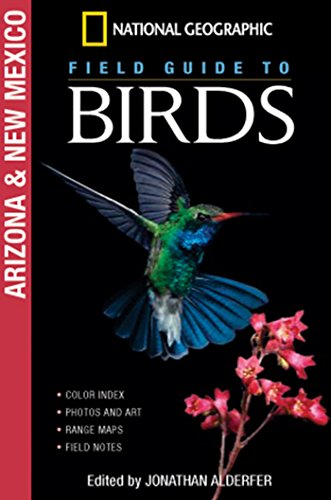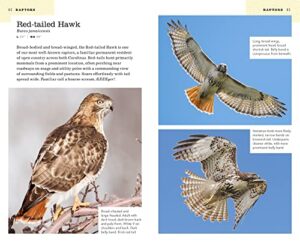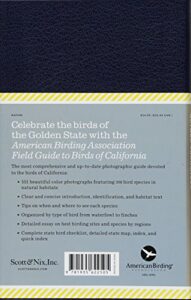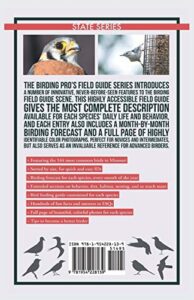Featuring as many as 175 birds apiece and nearly 300 photographs, illustrations and maps, this handy, informative book adds two Southwestern states to National Geographic’s growing series of field guides. Like its predecessors, this guide provides birders with quick and easy access to the kind of specific facts and savvy advice that they need: a regional map of birding hotspots; a knowledgeable introduction by a local expert on which birds to look for, where to find them, and what to focus on when they appear; a section on birding basics, field identification, and how to make the best use of the guide and its resources; scores of individual entries with photographs of each bird, recognition tips, and notes on behavior, habitat, and particular sites; and two indexes: one color-coded, the other alphabetical with life list boxes. An ideal solution for visitors looking to make the most of limited time and a valuable reference for anyone who lives in the region, these books belong in every birder’s library, beginner and veteran alike.
Arizona & New Mexico: these two year-round birding states boast some of the nation’s top sites, including the number-one spot for hummingbirds, plus desert and mountain species galore, from the Elegant Trogon—which resembles the Resplendent Quetzal of Central America—to the high-speed sprinter, the Greater Roadrunner.
Product Features
- National Geographic Field Guide to Birds Arizona and New Mexico





Easy to Use I love this book. There is a chart in the back of the book with birds divided by their primary colors. It shows a headshot of the bird and tells you which page it’s on. This makes finding birds fast.
Birds of New Mexico and Arizone This is an excellent refernce for both of my son’s. One living in Prescott Arizona and the other in Santa Fe New Mexico.This gives helps me to help my son’s to identify the Birds in there backyards and has helped to get them involved.
Nice, but . . . Well, nice book and it does show many of birds here in AZ, but I’ve seen other birds in my yard that I can’t identify in the book. They could be new arrivals to the state, but I don’t know. I think the author Mr. Alderfer needs to take a second look and make some additions.